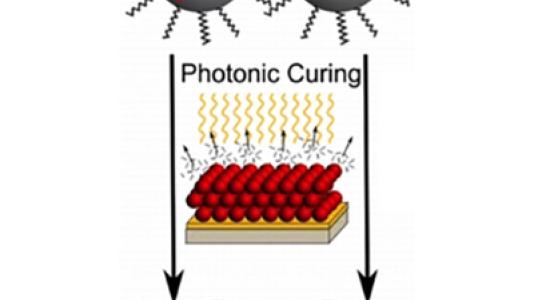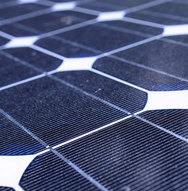
Transient absorption spectroscopy measurements performed at the Center for Nanoscale Materials (CNM) by users from the University of Texas at Austin, together with the CNM Nanophotonics Group, played a critical role in the detection of multiexcitons in the inexpensive model thin-film semiconductor CuInSe2. CuInSe2 is closely related to another more commonly produced thin film that holds the record for the most efficient thin-film semiconductor, CIGS (a CuInGaSe2 material). The nanocrystalline material was processed by “photonic curing,” which involves quickly heating up and cooling down of the top layer of the material. This curing process not only prevented the melting of the glass that contains the nanocrystals, but also vaporized organic molecules that inhibit multiple exciton extraction. The team together developed this new, inexpensive material, which has the potential to capture and convert solar energy, particularly from the bluer part of the spectrum, more efficiently.
Transient absorption spectroscopy measurements at the CNM confirmed multiexciton generation. Most simple solar cells can’t handle the excess energy of blue photons within the electromagnetic spectrum, and some energy is lost as heat. Cells that can handle electron-hole pair excitons stimulated by the blue photons are therefore highly desirable. Synthesis and photonic curing were developed by CNM users from the University of Texas at Austin.
C. Jackson Stolle et al.,“Multiexciton Solar Cells of CuInSe2 Nanocrystals,” J. Phys. Chem. Lett., 5, 304 (2014)
In the News
April 2014
